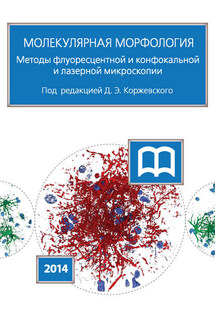Новые направления в игровой терапии. Проблемы, процесс и особые популяции - страница 16
Landreth. G. (1991). Play therapy: The art of the relationship. Muncie, IN: Accelerated Development.
Mann, E., McDermott, J. (1983). Play therapy for victims of child abuse and neglect. In C. Schaefer & K. O’Connor (Eds.), Handbook of play therapy (pp. 283–306). New York: John Wiley, Sons.
Maslow, A. (1968). Toward a psychology of being. New York: D. Van Nostrand.
Millar, S. (1968). The psychology of play. Baltimore: Penguin Books.
Moustakas, C. (1973). Children in play therapy. New York: Jason Aronson.
Moustakas, C. (1981). Rhythms, rituals and relationships. Detroit, MI: Center for Humanistic Studies.
Moustakas, C. (1982). Emotional adjustment and the play therapy process. In G. Landreth (Ed.), Play therapy: Dynamics of the process of counseling with children (pp. 217–230). Springfield, IL: Charles С. Thomas.
Neumann, E. (1971). The elements of play. New York: MSS Information Corp.
Newman, В., Newman, P. (1978). Infancy and childhood. New York: John Wiley, Sons.
Papalia, D., Olds, S. (1986). Human development. New York: McGraw-Hill.
Piaget, J. (1962). Play, dreams and imitation in childhood. New York: Norton.
Reifel, S., Greenfield, P. (1982). Structural development in a symbolic medium: The representational use of block constructions. In G. Forman (Ed.), Action and thought from sensorimotor schemes to symbolic operations (pp. 203–233). New York: Academic Press.
Rogers, D., Ross, D. (1986). Encouraging positive social interaction among young children. Young Children, 41, 12–17.
Rubin, K., Howe, N. (1985). Toys and play behaviors: an overview. Topics in Early Childhood Special Education, 5, 1–10.
Segal, J., Segal, Z. (1989). Child’s play. Parents’ Magazine, 64, 126.
Tegano, D., Sawyers, J., Moran, J. (1989). Problem finding and solving in play: The teacher’s role. Childhood Education, 66, 92–97.
Vinturella, L., James R. (1987). Sand play: A therapeutic medium with children. Elementary School Guidance and Counseling, 21, 229–238.
Waelder, R. (1976). Psychoanalytic theory of play. In C. Schaefer (Ed.), The therapeutic use of child’s play (pp. 79–93). New York: Jason Aronson.
Weissbourd, B. (1986). The importance of play. Parents’ magazine, 61, 142.
White, R. (1960). Competence and the psycho-sexual stages of development. In M. Jones (Ed.), Nebraska symposium on motivation (pp. 97–141). Lincoln, NE: University of Nebraska.
Глава 2
Личностные качества, необходимые игровому терапевту для эффективной деятельности
Тина Эдлинг Харрис, Гарри Л. Лэндрет
Игра, являющаяся важным детским занятием, долго считалась естественным способом самовыражения ребенка и с годами привлекала все большее внимание психотерапевтов. Многие авторы пытались определить основные элементы этой уникальной формы терапии.
Хотя теоретическая ориентация игровых терапевтов может быть различной, существует фундаментальное соглашение относительно значимости отношений между ребенком и терапевтом (Axline, 1969; Ginott, 1994; Landreth, 1993; Moustakas et al., 1956; Smith, Herman, 1994). В игровой терапии отношения являются ключом к росту взаимопонимания, и успех или неудача встречи с терапевтом целиком зависит от умения последнего строить взаимоотношения (Axline, 1969; Landreth, 1991, 1993; Moustakas et al., 1956). Атмосфера игровой комнаты задается поведением игрового терапевта, его отношением и доверием к ребенку, его представлениями о ребенке, о самом себе и о природе жизни (Hyde, 1971). Наиболее существенной составляющей взаимоотношений является личность самого терапевта, она важнее, чем его профессиональные знания (Landreth, 1991). Таким образом, личностные характеристики и навыки межличностного взаимодействия игрового терапевта имеют решающее значение.









